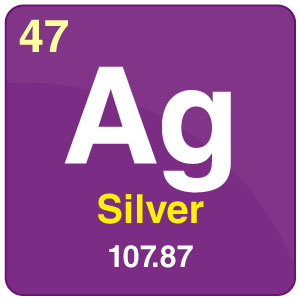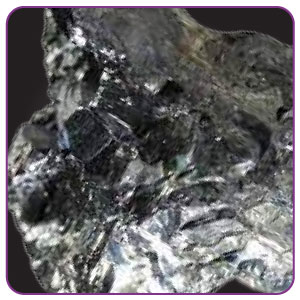Silver

| Symbol | Ag |
| Atomic Number | 47 |
| Atomic Mass | 107.868 g.mol −1 |
| Discovered by | Believed to be discovered in 3000 BC |

Chemical Properties of Silver
| Group | 11 | Melting point | 961.78°C, 1763.2°F, 1234.93 K |
| Period | 5 | Boiling point | 2162°C, 3924°F, 2435 K |
| Block | d | Density (g cm−3) | 10.5 |
| Atomic number | 47 | Relative atomic mass | 107.868 |
| State at 20°C | Solid | Key isotopes | 107Ag, 109Ag |
| Electron configuration | [Kr] 4d105s1 | CAS number | 7440-22-4 |
| ChemSpider ID | 22394 | ChemSpider is a free chemical structure database | |
What is Silver?
- Silver is the most conducting metal with atomic number 47 and represented with the symbol ‘Ag’ in the periodic table.
- Silver is abundant in mineral-rich soils. It is available in the mixed form, generally in crystal form.
- Plants absorb silver and measured levels in the soil come around 0.03 – 0.5 ppm.
Physical properties of Silver
- Silver ( Ag ) is a white, soft, lustrous, very ductile and malleable metal.
- It is a very good conductor of electricity and heat.
- It has the highest electrical conductivity of all metals, but the high cost of it has restricted us from using it in all electrical devices.
Applications and Effects of Silver
- The principal use of this metal is precious, including jewellery and decorative items.
- The other applications include:
- Currency – still in some countries silver coins are used as currency.
- Jewellery and silverware
- It is used in the manufacturing of solar panels
- Air conditioning – It is used in the manufacturing of typical air conditioners
- Water purification – It is used in water purifiers to prevent the growth of algae and bacteria in filters
- Photography and electronic devices
- Used as an antibiotic coating on medical devices
- Thermal or infrared coatings use silver as it reflects some wavelengths better than aluminum.

Comments